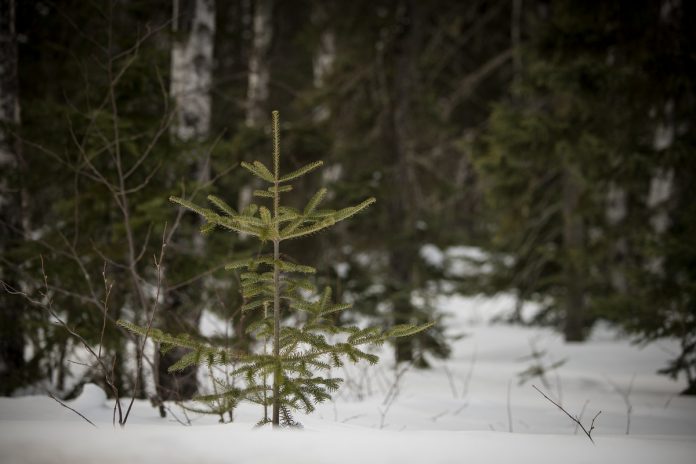A swamp white oak has never thrived in Superior National Forest. The lower Great Lakes? Secure. Even Missouri and Kentucky.
But the cold-weather forest of northern Minnesota is a place where only the hardiest of trees can survive the winter: black spruce, jack pine, and aspen, to name a few.
However, increasing temperatures change this equation. And it’s got scientists wondering whether certain warm-weather trees might find a new home in the 3 million-acre forest that’s expected to heat up over the next few decades.
A possibility? swamp oak. It is a candidate species for one of the Forest Service’s most ambitious climate adaptation efforts to date – the physical translocation of seeds and seedlings from more southern latitudes to warming northern forests.
“Historically, humans have moved species around the globe for centuries, if not millennia. This is nothing new to forestry,” said Leslie Brandt, a climate adaptation specialist with the Forest Service in St. Paul, Minnesota, in a recent publication. “What’s new is the intentional use of climate data to inform these decisions.”
While some tree species naturally migrate to the northern edges of their habitat as the climate warms, they often “don’t have a very large seed dispersal distance and just can’t keep up with the fast pace of climate change,” she added.
Enter “human-assisted migration,” where rangers physically introduce new species — or more heat-tolerant varieties of native species — to see how they fare in changing conditions. Superior National Forest will be an early testing ground for the approach.
“Nothing is being planted at this time, the purpose of the plan is to establish the conditions for making these decisions,” Stephen Handler, a climate change specialist at the Forest Service’s Northern Research Station in Houghton, Michigan, said in a text message.
Some other species that could adapt to the boreal transition forest include thick-toothed cottonwood, silver maple, smooth elm and yellow birch, according to a Forest Service species summary that outlines which species might gain or lose habitat under climate warming scenarios.
According to the Forest Service’s Climate Change Resource Center, “Species with very specific habitat needs or ranges limited by physical barriers such as fragmentation or geographic features … could be at risk of extinction or extinction due to climate change.” Where species collapse does not occur, “Climate change may lead to mass mortality and population extinction due to population misadaptation”.
Human-assisted tree migration could be a response to the Forest Service’s 2022 Reforestation Strategy, which calls for foresters, ecologists and other stakeholders to create more climate-resilient forests.
“Climate-responsive reforestation, including natural regeneration and tree planting, is critical to growing more resilient forests that will help manage the wildfire crisis, sequester carbon and improve biodiversity and ecosystem services,” the strategy reads.
Officials say the Superior National Forest pilot could become a model for migration programs in other forests. Superior National Forest field scientists and project managers did not respond to requests for comment.
A summary of the project by the Forest Service said that Superior National Forest will “identify areas in the forest suitable for assisted migration, tree species best suited for assisted migration, monitoring and logistical considerations, and effective Processes to involve tribal nations and other partners.”
Lee Frelich, director of the Center for Forest Ecology at the University of Minnesota, said some species have already inch their way north, establishing “small outposts at the northern end of their range,” including the Boundary Waters Canoe Area Wilderness in Superior National Forest. Among them: red maple, red oak, linden and ironwood.
“The red maples in the Boundary Waters are self-propagating and finding suitable climates in many places,” he said.
Experts warn that human-assisted tree migration must take into account the risk of introducing non-native species into an area where they could overpopulate native species and crowd out water and soil nutrients.
Frelich said some European invaders — namely the Amur maple from northern China and Russia, and the Siberian elm — have taken root in the northern forests and need careful management.
Conversely, the red oak native to the US has invaded parts of Europe, he said.
“Of course, I think it’s good to know which species will do well with the changes that have already occurred,” Frelich said. “It still doesn’t allow you to fully predict what will happen if it gets much warmer in the future, but it does tell you whether the warming we’ve already experienced is allowing species from the south to do well.”
And he added: “If they don’t grow now, maybe in 10 or 20 or 50 years.”
www.eenews.net
https://www.eenews.net/articles/to-beat-heat-forest-service-explores-new-home-for-trees/












